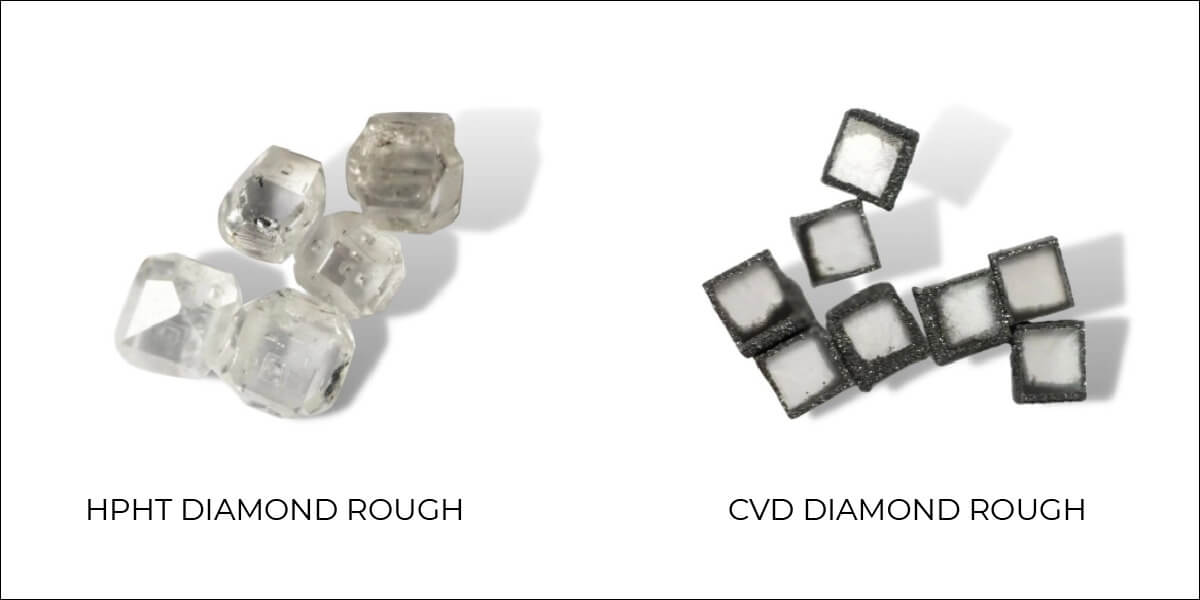CVD (Chemical Vapor Deposition) and HPHT (High Pressure High Temperature) are two different methods of lab grown diamonds in a laboratory setting.
CVD diamonds are grown from a mixture of gases (typically methane and hydrogen) that are broken down into carbon atoms and deposited onto a substrate in a process known as chemical vapor deposition. The resulting diamonds tend to be purer, with fewer impurities, than HPHT diamonds.
HPHT diamonds, on the other hand, are formed by mimicking the high pressure and high temperature conditions that exist deep within the Earth. Raw diamond material is placed in a press and subjected to high pressure and high temperature conditions, causing the carbon atoms to rearrange into the diamond crystal structure. HPHT diamonds tend to be more similar in appearance to naturally occurring diamonds and are often used in applications that require high durability.
In summary, CVD diamonds are grown through a chemical process and tend to be purer and have fewer impurities, while HPHT diamonds are grown through a physical process and tend to be more similar in appearance to naturally occurring diamonds.


